Design of Position Control Method for Pump-Controlled Hydraulic Presses via Adaptive Integral Robust Control
Abstract
:1. Introduction
2. The Mathematical Model and Analysis of PCHPS
2.1. The Principle of PCHPS
- (1)
- Fast-next stage: The electromagnetic directional valve 1DT, 3DT, and 4DT are powered, and the hydraulic oil enters the small cross-sectional area of the hydraulic cylinder. The hydraulic cylinder is driven to complete rapid movement with small flow, and it finally returns to the oil tank.
- (2)
- Slow-down stage: The electromagnetic directional valve 1DT is powered, the hydraulic oil enters the rodless cavity of the hydraulic cylinder to push the hydraulic cylinder to complete the slow motion with a large flow.
- (3)
- Position-holding stage: The electromagnetic directional valve 1DT is powered, the motor speed will be adjusted in real time according to the position parameters detected by the sensor, so as to realize the position closed-loop control and ensure that the hydraulic cylinder position is in the required position.
- (4)
- Fast-up stage: The electromagnetic directional valve 2DT and 3DT are powered, and the hydraulic oil pushes the hydraulic cylinder to reset.
2.2. The Mathematical Model of PCHPS
2.2.1. The Mathematical Model of AC Servo Motor
2.2.2. The Mathematical Model of the Pump-Controlled Cylinder System
3. Adaptive Integration Robust Control Algorithm
3.1. Adaptive Integration Robust Controller
3.1.1. System State Space Expression
3.1.2. Controller Design
3.2. The Dynamic Simulation of PCHPS
| — | Controller gain; | |
| — | The initial values of the adaptive parameters; | |
| — | Parameter adaptive gain; | |
| — | Robust control gain. |
4. Experimental Verification of PCHPS
4.1. Experimental Test Platform of PCHPS
4.2. Experimental Test of PCHPS
5. Discussion
5.1. The Research Background and Significance of Hydraulic Press
5.2. The Selection of Control Strategy
6. Conclusions
Author Contributions
Funding
Data Availability Statement
Conflicts of Interest
Abbreviations
| PCHPS | pump-controlled hydraulic position servo system |
| AIRC | adaptive integral robust control |
| d-axis component of stator voltage | |
| q-axis component of stator voltage | |
| d-axis components of stator current | |
| stator d-axis equivalent inductance | |
| the stator q-axis equivalent inductance | |
| q-axis components of stator current | |
| electrical angular velocity | |
| equivalent resistance of stator winding | |
| electromagnetic torque | |
| number of magnetic poles of motor | |
| cross-sectional area of plunger | |
| the single piston radius | |
| single plunger angular velocity | |
| displacement of piston pump | |
| piston diameter | |
| number of plunger | |
| distribution circle radius of plunger | |
| swash plate angle | |
| leakage coefficient of piston pump | |
| leakage coefficient in the hydraulic cylinder | |
| leakage coefficient outside the hydraulic cylinder | |
| cross-sectional area of the rodless cavity piston rod in the hydraulic cylinder | |
| hydraulic cylinder rod cavity piston rod cross-sectional area | |
| Initial volume of rodless cavity of hydraulic cylinder | |
| Initial volume of hydraulic cylinder with rod cavity | |
| load flow | |
| rodless cavity flow | |
| rod cavity flow | |
| effective bulk modulus | |
| total mass of piston and load converted to piston | |
| viscous damping coefficient | |
| load spring stiffness | |
| load force | |
| total leakage coefficient | |
| effective area of hydraulic cylinder at work | |
| leakage coefficient of hydraulic cylinder | |
| centralized nominal function of system unmodeled dynamics | |
| equivalent displacement | |
| parameter adaptive rate diagonal matrix | |
| discontinuous insinuation function | |
| tracking error | |
| any positive feedback gain | |
| virtual control law of the state variable | |
| deviation between the two | |
| model-based feedback control law | |
| robust control part | |
| integral robust feedback gain | |
| standard symbol function about errors . | |
| positive feedback gain | |
| adjustable model compensation control by updating parameters online | |
| robust control | |
| regression vector of parameter adaptation |
References
- Yan, X.; Chen, B. Analysis of a novel energy-efficient system with 3-D vertical structure for hydraulic press. Energy 2020, 218, 119518. [Google Scholar] [CrossRef]
- Huang, H.; Zou, X.; Li, L.; Li, X.; Liu, Z. Energy-Saving Design Method for Hydraulic Press Drive System with Multi Motor-Pumps. Int. J. Precis. Eng. Manuf.-Green Technol. 2019, 6, 223–234. [Google Scholar] [CrossRef]
- Feng, J.; Yu, B.; Li, X.; Yao, J.; Kong, X.; Guo, H. Study of ADRC on fluid power transmission system control characteristics of 60MN hydraulic press. In Proceedings of the 2015 International Conference on Fluid Power and Mechatronics (FPM), Harbin, China, 5–7 August 2015; pp. 660–666. [Google Scholar] [CrossRef]
- Ba, K.; Song, Y.; Shi, Y.; Wang, C.; Ma, G.; Wang, Y.; Yu, B.; Yuan, L. A Novel One-Dimensional Force Sensor Calibration Method to Improve the Contact Force Solution Accuracy for Legged Robot. Mech. Mach. Theory 2022, 169, 104685. [Google Scholar] [CrossRef]
- Li, J.; You, B.; Ding, L.; Yu, X.; Li, W.; Zhang, T.; Gao, H. Dual-Master/Single-Slave Haptic Teleoperation System for Semiautonomous Bilateral Control of Hexapod Robot Subject to Deformable Rough Terrain. IEEE Trans. Syst. Man Cybern. Syst. 2021, 1–15. [Google Scholar] [CrossRef]
- Ba, K.; Song, Y.; Yu, B.; Wang, C.; Li, H.; Zhang, J.; Ma, G. Kinematics correction algorithm for the LHDS of a legged robot with semi-cylindrical foot end based on V-DOF. Mech. Syst. Signal Processing 2022, 167, 108566. [Google Scholar] [CrossRef]
- Yin, S.; Yang, H.; Xu, K.; Zhu, C.; Wang, Y. Location of abnormal energy consumption and optimization of energy efficiency of hydraulic press considering uncertainty. J. Clean. Prod. 2021, 294, 126213. [Google Scholar] [CrossRef]
- Xuan, W.; Fanquan, Z. Design of electro-hydraulic servo loading controlling system based on fuzzy intelligent water drop fusion algorithm. Comput. Electr. Eng. 2018, 71, 485–491. [Google Scholar] [CrossRef]
- Macchelli, A.; Barchi, D.; Marconi, L.; Bosi, G. Robust Adaptive Control of a Hydraulic Press. IFAC-PapersOnLine 2020, 53, 8790–8795. [Google Scholar] [CrossRef]
- Jin, X.; Chen, K.; Zhao, Y.; Ji, J.; Jing, P. Simulation of hydraulic transplanting robot control system based on fuzzy PID controller. Measurement 2020, 164, 108023. [Google Scholar] [CrossRef]
- Liu, D.; Li, C.; Malik, O.P. Nonlinear modeling and multi-scale damping characteristics of hydro-turbine regulation systems under complex variable hydraulic and electrical network structures. Appl. Energy 2021, 293, 116949. [Google Scholar] [CrossRef]
- Maier, C.C.; Schröders, S.; Ebner, W.; Köster, M.; Fidlin, A.; Hametner, C. Modeling and nonlinear parameter identification for hydraulic servo-systems with switching properties. Mechatronics 2019, 61, 83–95. [Google Scholar] [CrossRef]
- Dang, X.; Zhao, X.; Dang, C.; Jiang, H.; Wu, X.; Zha, L. Incomplete differentiation-based improved adaptive backstepping integral sliding mode control for position control of hydraulic system. ISA Trans. 2020. prepublish. [Google Scholar] [CrossRef] [PubMed]
- Soon, C.C.; Ghazali, R.; Jaafar, H.I.; Hussien, S.Y.S. Sliding Mode Controller Design with Optimized PID Sliding Surface Using Particle Swarm Algorithm. Procedia Comput. Sci. 2017, 105, 235–239. [Google Scholar] [CrossRef]
- Borisov, O.I.; Pyrkin, A.A.; Isidori, A. Robust Output Regulation of Permanent Magnet Synchronous Motors by Enhanced Extended Observe. IFAC-PapersOnLine 2020, 53, 4881–4886. [Google Scholar] [CrossRef]
- Pang, H.; Wu, D.; Deng, Y.; Cheng, Q.; Liu, Y. Effect of working medium on the noise and vibration characteristics of water hydraulic axial piston pump. Appl. Acoust. 2021, 183, 108277. [Google Scholar] [CrossRef]
- Bedotti, A.; Pastori, M.; Scolari, F.; Casoli, P. Dynamic modelling of the swash plate of a hydraulic axial piston pump for condition monitoring applications. Energy Procedia 2018, 148, 266–273. [Google Scholar] [CrossRef]
- Babikir, H.A.; Abd Elaziz, M.; Elsheikh, A.H.; Showaib, E.A.; Elhadary, M.; Wu, D.; Liu, Y. Noise prediction of axial piston pump based on different valve materials using a modified artificial neural network model. Alex. Eng. J. 2019, 58, 1077–1087. [Google Scholar] [CrossRef]
- Yao, B.; Bu, F.; Reedy, J.; Chiu, G.C. Adaptive robust motion control of single-rod hydraulic actuators: Theory and experiments. IEEE/ASME Trans. Mechatron. 2002, 5, 79–91. [Google Scholar]
- Yao, B.; Bu, F.; Chiu, T.C. Nonlinear adaptive robust control of electro-hydraulic servo systems with discontinuous projections. In Proceedings of the IEEE Conference on Decision & Control, Tampa, FL, USA, 16–18 December 1998. [Google Scholar]

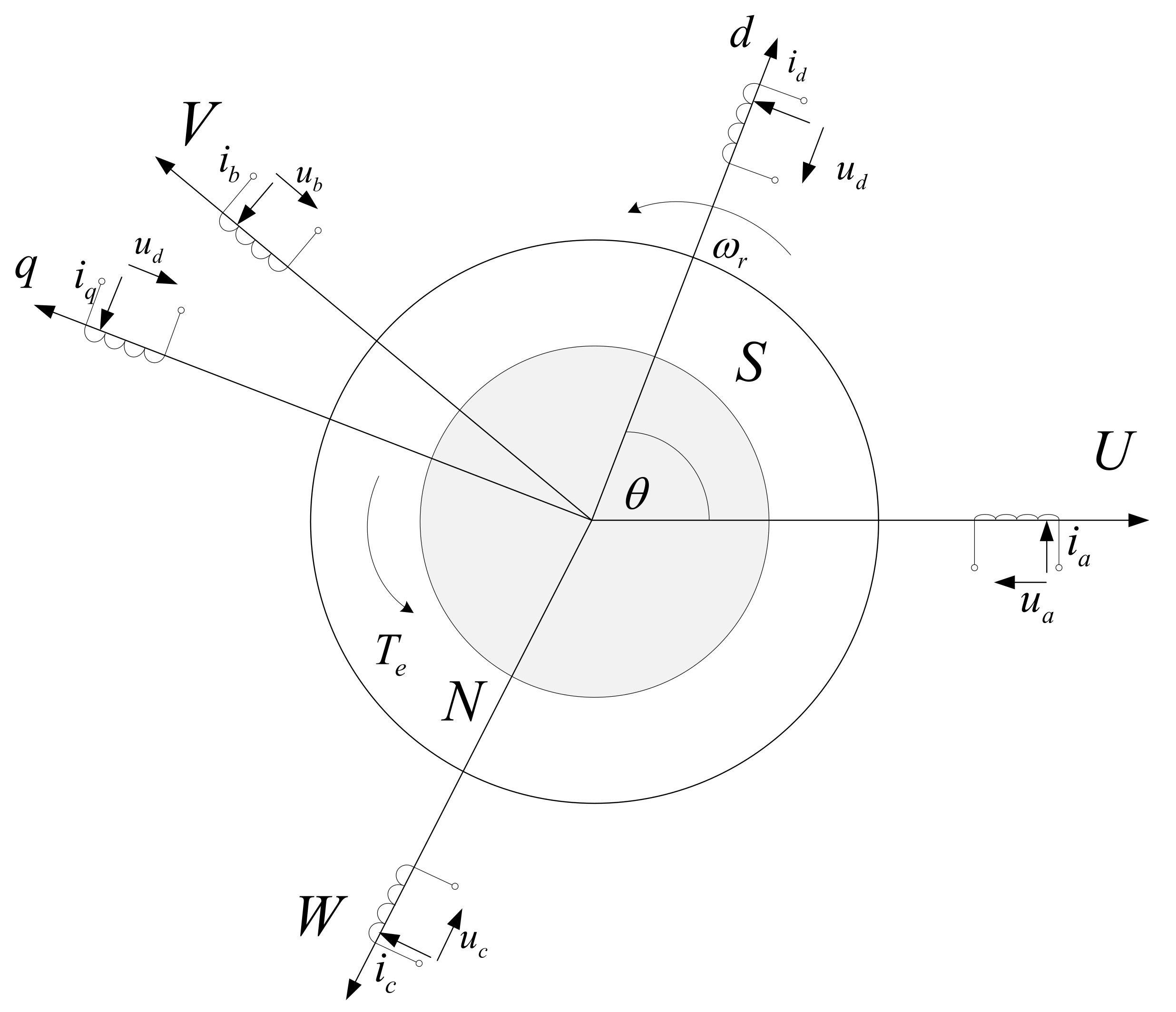



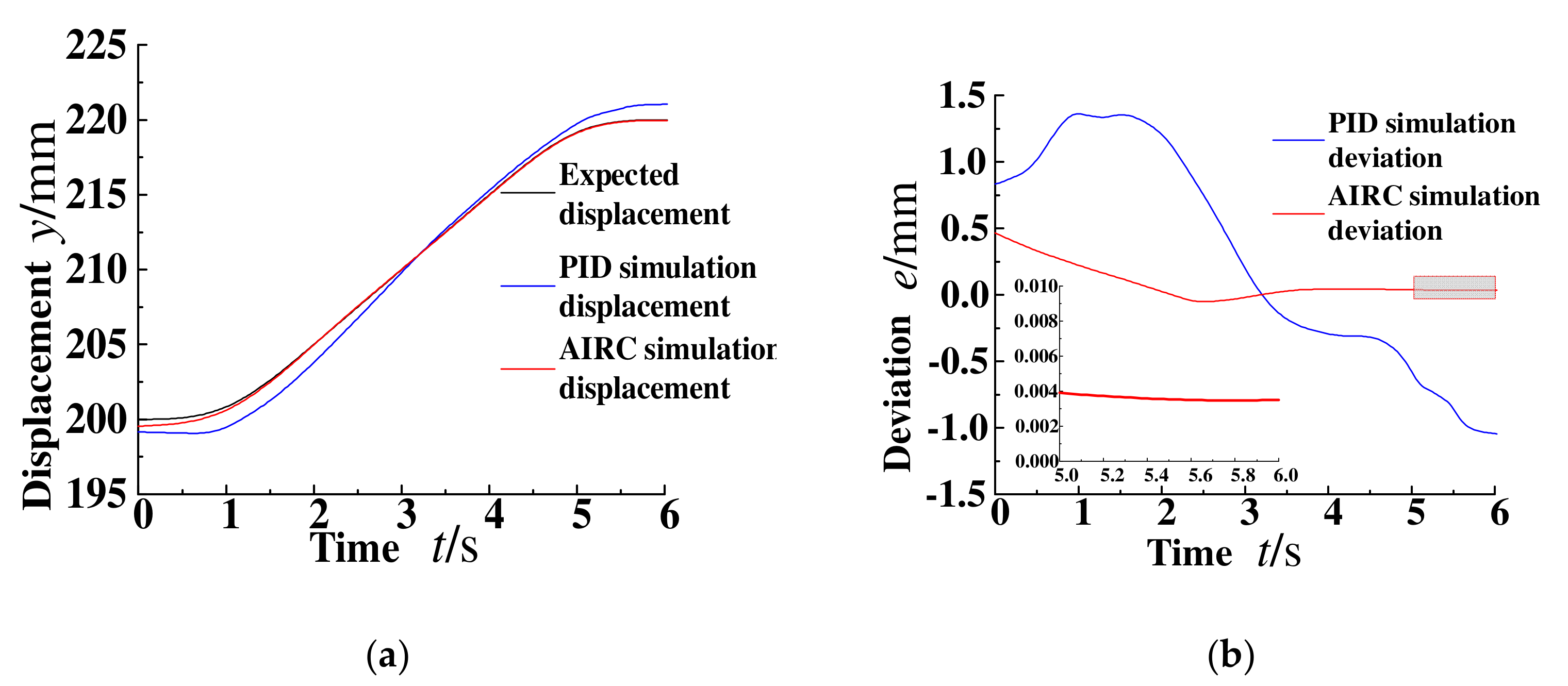
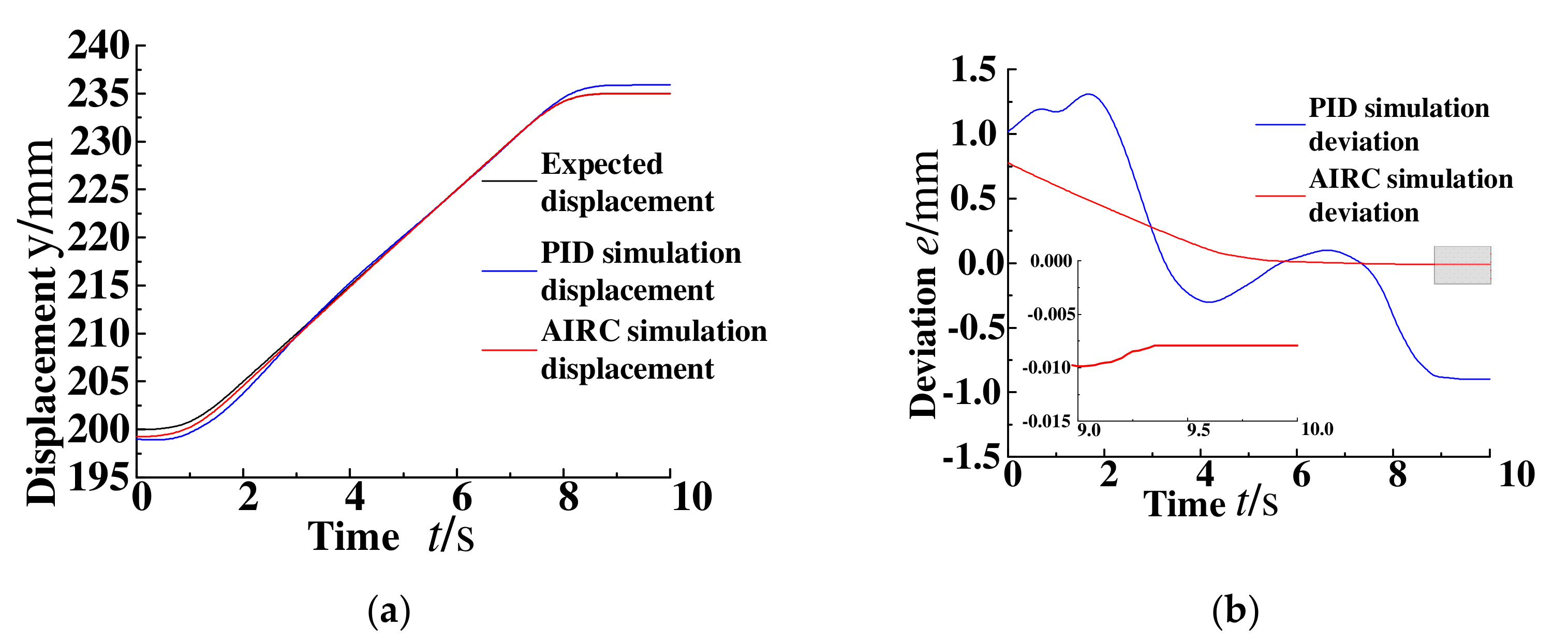

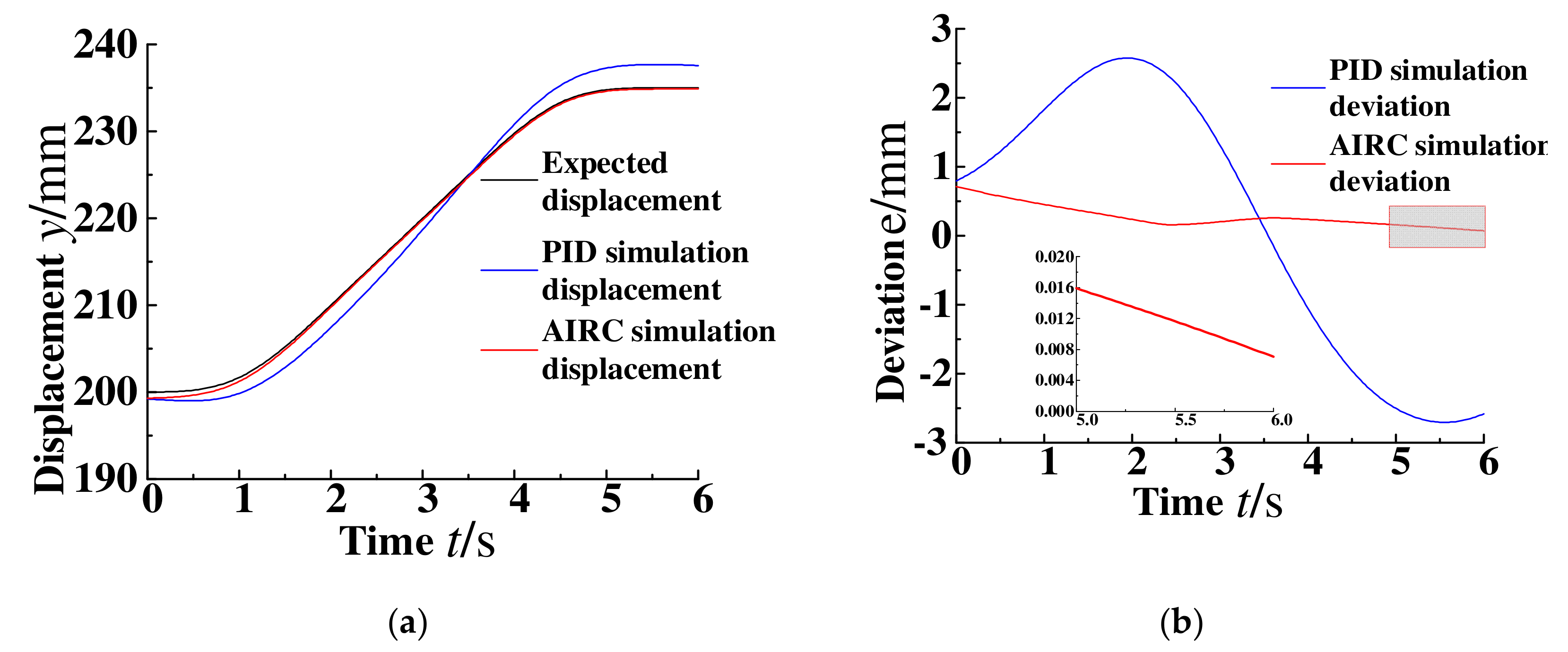
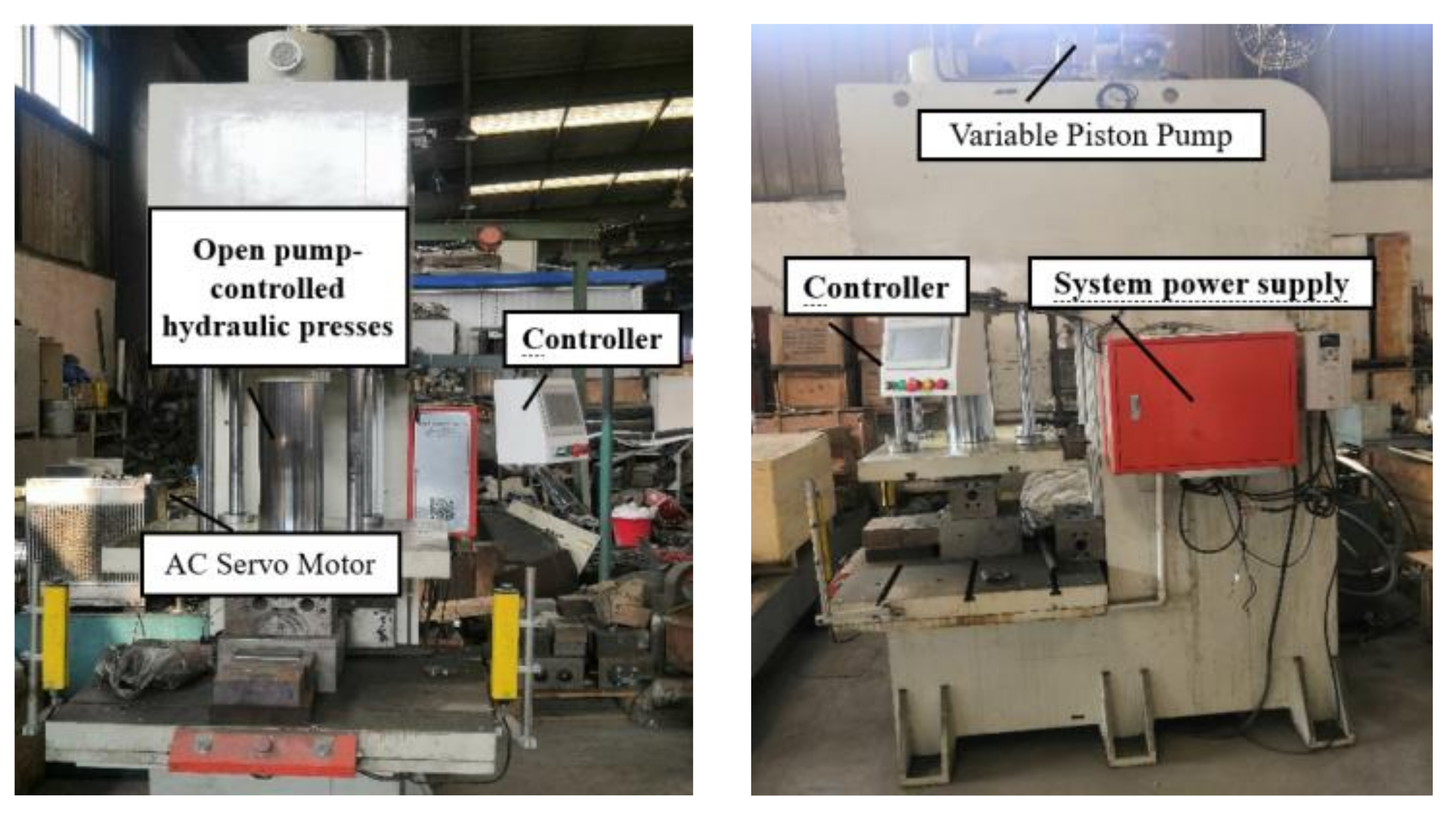



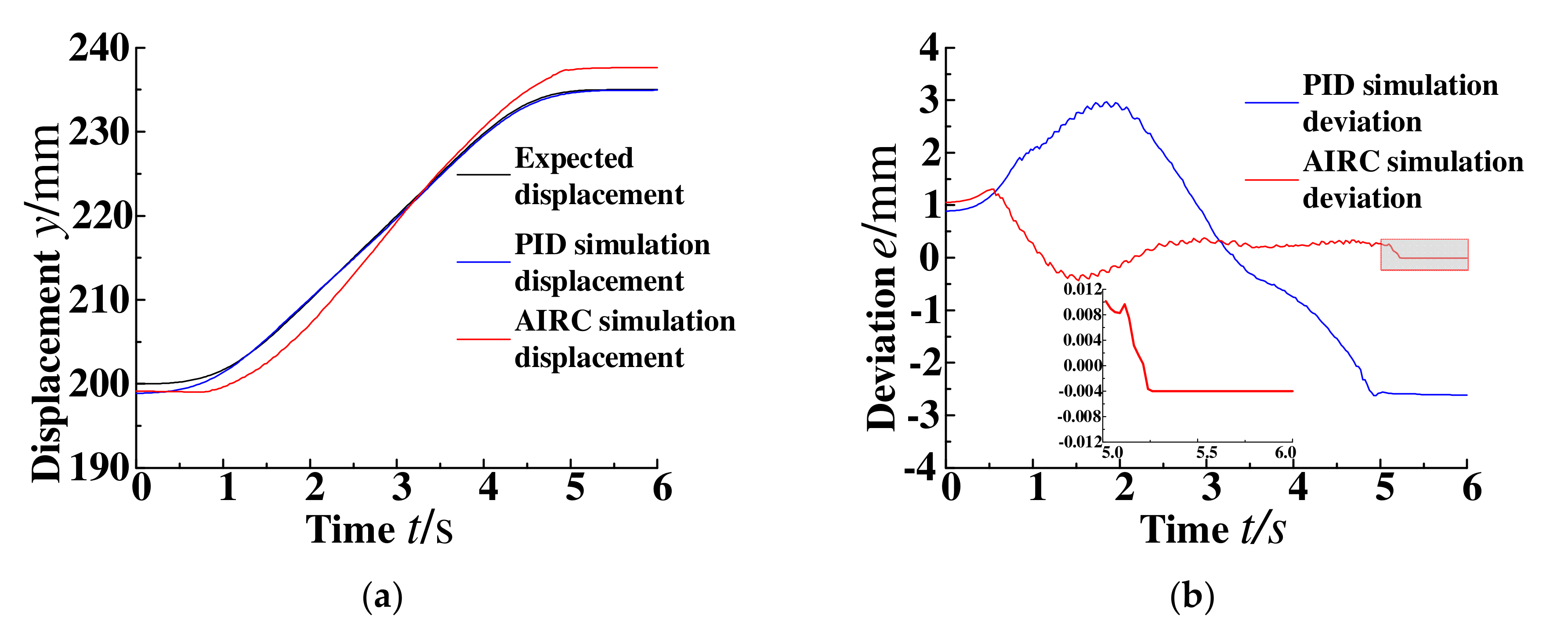
| Conditions | Acceleration (mm/s3) | Max Acceleration (mm/s2) | Max Speed (mm/s) | Travel (mm) |
|---|---|---|---|---|
| ① | 5 | 5 | 5 | 20 |
| ② | 5 | 5 | 5 | 35 |
| ③ | 5 | 5 | 10 | 35 |
| ④ | 10 | 10 | 10 | 35 |
Publisher’s Note: MDPI stays neutral with regard to jurisdictional claims in published maps and institutional affiliations. |
© 2021 by the authors. Licensee MDPI, Basel, Switzerland. This article is an open access article distributed under the terms and conditions of the Creative Commons Attribution (CC BY) license (https://creativecommons.org/licenses/by/4.0/).
Share and Cite
Huang, Z.; Xu, Y.; Ren, W.; Fu, C.; Cao, R.; Kong, X.; Li, W. Design of Position Control Method for Pump-Controlled Hydraulic Presses via Adaptive Integral Robust Control. Processes 2022, 10, 14. https://doi.org/10.3390/pr10010014
Huang Z, Xu Y, Ren W, Fu C, Cao R, Kong X, Li W. Design of Position Control Method for Pump-Controlled Hydraulic Presses via Adaptive Integral Robust Control. Processes. 2022; 10(1):14. https://doi.org/10.3390/pr10010014
Chicago/Turabian StyleHuang, Zhipeng, Yuepeng Xu, Wang Ren, Chengwei Fu, Ruikang Cao, Xiangdong Kong, and Wenfeng Li. 2022. "Design of Position Control Method for Pump-Controlled Hydraulic Presses via Adaptive Integral Robust Control" Processes 10, no. 1: 14. https://doi.org/10.3390/pr10010014
APA StyleHuang, Z., Xu, Y., Ren, W., Fu, C., Cao, R., Kong, X., & Li, W. (2022). Design of Position Control Method for Pump-Controlled Hydraulic Presses via Adaptive Integral Robust Control. Processes, 10(1), 14. https://doi.org/10.3390/pr10010014






